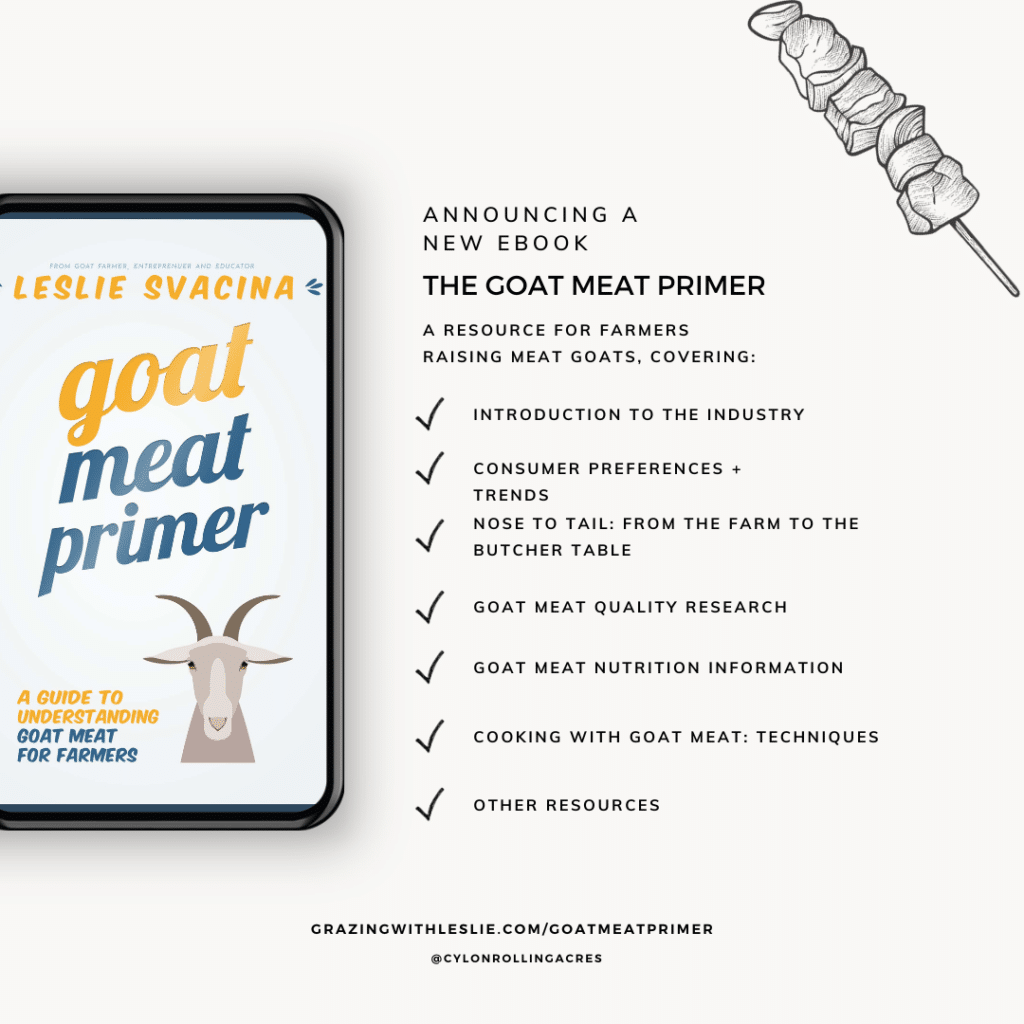It might surprise you to know that when I started out raising goats I didn’t know much at all about the meat. As our business grew and we transitioned to primarily selling goat meat directly to customers, I picked up a lot of great information that helped me understand it so much better.
I also spent a lot of time cooking different cuts of goat meat and trying them out in different dishes. Here’s how you can get valuable hands on experience with goat meat in the kitchen yourself:
Get a Goat Processed
One of the best ways to understand the different cuts of goat meat is to get a goat processed for yourself, or butcher one on your own.
Be sure to get as wide a variety of cuts as you can so that you can experiment with cooking each one, especially the less “common” cuts outside of just stew meat and ground.
My guide to goat meat cuts is a good place to start when looking to learn more about each cut and how to cook them.
You can also check out my go-to reference book for goat butchery by Adam Danforth which has a chapter exclusively devoted to goat butchering and different cuts. It’s a great resource whether you’re doing the harvest yourself or if you’re working with a local processor who might not have as much experience cutting a goat. It is full of with photo illustrations to guide you in the process or help you communicate with your butcher.
Get Cooking
Once you have a good understanding of the cuts, it’s time to try your hand at preparing them. Use each one in a different recipe and experiment with different types of techniques.
Goat meat can be cooked low and slow, braised and stewed, pan fried and grilled.
Generally, low and slow is a great method to use when cooking stew meat, leg of goat, roasts and shanks and can be done in a slow cooker, pressure cooker (Instant pot) or oven with a dutch oven. Same goes for braising and stewing.
When pan frying and grilling, chops and steaks as well as ground goat is the way to go. Be sure to use a meat thermometer to know when you’ve reached the right temperature until you’ve gotten more comfortable. Ground goat should be cooked to 160 F and all other cuts should be cooked to 145 F.
Check out my farm website for a wide variety of goat recipes to try.
Other Resources

My Goat Meat Primer ebook includes chapters on cooking goat meat, as well as nutrition, determining meat quality and more.

[…] Getting to Know Goat Meat in the Kitchen […]